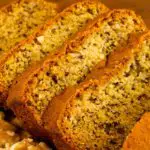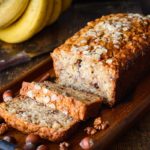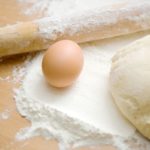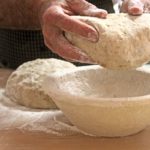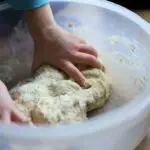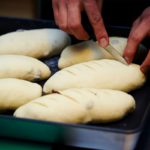Unleavened bread can be cooked quickly but is not likely to be ideal for accompanying soup.
As a flat bread, you do not need yeast but you should require wheat flour and maybe some olive oil.
With a large bowl and a simple regional recipe you can have unleavened bread like roti, a tortilla, or a bannock.
What Is Unleavened Bread?
Unleavened bread can simply be classed a variety of breads without a leavening agent.
With a yeast free bread recipe, you can expect to create a flat bread which includes roti, tortillas and pita bread.
The bread is typically prepared in a bowl and you still end up with a dough which you will need to roll out.
On a hot surface like a griddle or skillet, the bread quickly cooks and you can have it ready within minutes.
The history of unleavened bread dates back to ancient times and is even mentioned in the Bible.
This is where the idea of unleavened bread uses tradition as, without yeast, the bread can be created quickly.
Not all flat breads are unleavened bread, but all unleavened bread should be flat.
The Difference Between Leavened And Unleavened Bread
The key difference between leavened and unleavened breads is the use of rising agents.
Yeast is typically added to a bread dough and then it is left to rise before being cooked in the oven.
The time given to bread dough to allow it to rise is a significant difference and is why many cultures persist with unleavened bread to this day.
Also, if a significant amount of salt is added to a bread recipe then it can kill yeast which is typically why flat breads use a little more salt in their recipe.
There are some flatbreads that still use leavening agents. A European flatbread is rieska which comes from the northern parts of Finland.
This flatbread is typically made from barley or rye flour with oats, baking powder and soda, salt, sugar, combined in a disk then butter and buttermilk worked in.
The oven has to be set very high at around 500°F and a very wet dough is left in a pan and you may even need to apply oil to your hands to transfer it.
Unleavened Bread Recipes
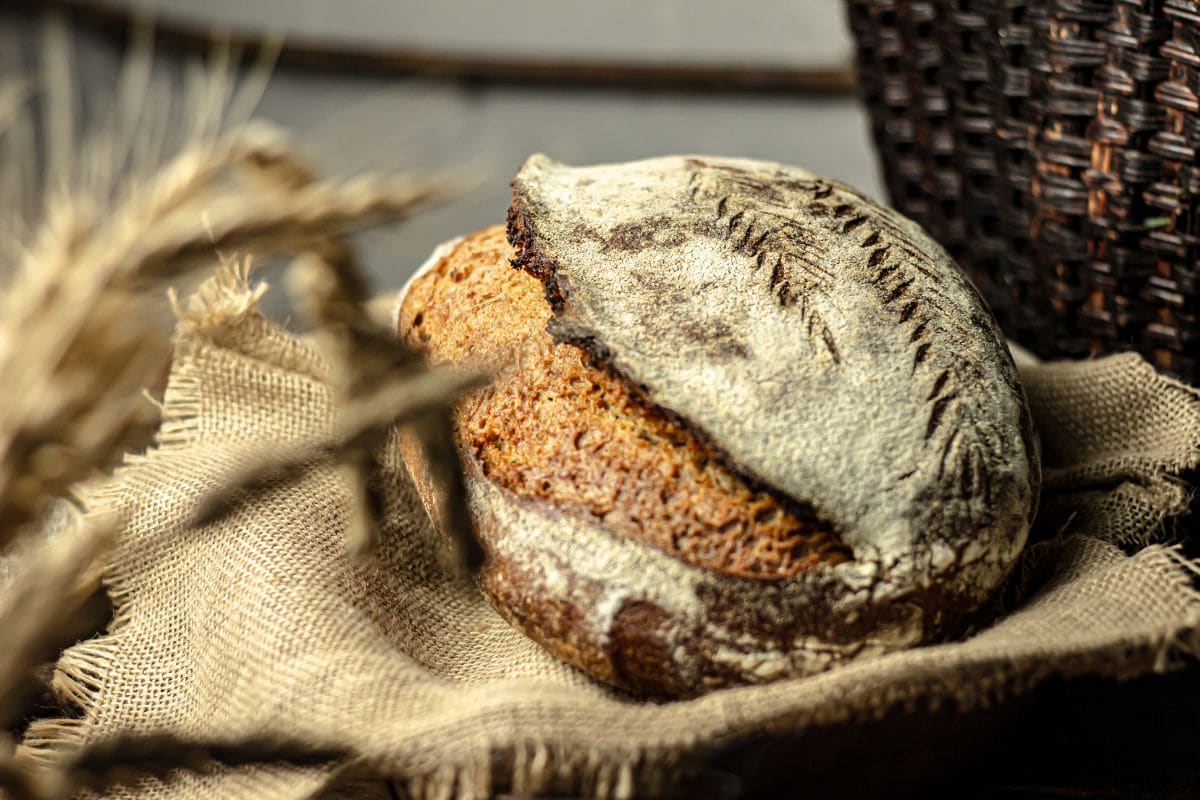
As one of the longest surviving food recipes, unleavened bread still survives today and still keeps some of those religious reasons.
There are some easy recipes though many use a skillet or grains from a regional area. You would think that all flat bread is unleavened yet that is not strictly true.
Pizza dough, pancakes, and focaccia may look flat but they all contain a leavening agent like baking powder, baking soda, or yeast to add air and create a lighter bread.
Lefse
This is a Norwegian flatbread that combines potatoes with milk or cream for a rich recipe.
You can create gloriously thick or thin versions though a roll up is ideal for breakfast or lunch.
Piadina Bread
For authentic bread that is both strictly Italian and poor man’s fare, try piadina.
These are created with a mix of olive oil, water and flour then baked over a hot skillet or griddle.
Tortillas
You can use tortillas for all sorts of food recipes, from delicious tacos to burritos, and nachos.
The humble tortilla has recipes that use cornmeal or flour to create a Mexican flatbread you can shape up or toast how you want.
Chapati
Chapati is a type of Indian flatbread that can be created from a skillet or griddle though it is traditionally served on a curved one.
The recipe calls for whole wheat flour and is used more so than most Indian flatbreads.
Bannock
Bannock is a quick flatbread from the British Isles that has a varying ingredient list. Some varieties can be made with melted butter, wheat flours, and even raisins.
Final Thoughts
Not all flat breads should be classed as unleavened bread as Armenian flatbread, known as lavash, uses a small amount of yeast.
However, creating a flatbread typically means going without a rising agent as the dough should be quickly prepared with the bread not requiring any time to rise.
You will still need a baking sheet, a bowl, flour (typically wheat flour), and a stove top, griddle, or skillet.
Flat breads can also be prepared in advance, store covered with a kitchen towel to keep fresh.
Unleavened breads can prove versatile as you can dip them into stews or use them to wrap food.
Take the tortilla for instance, you can use the unleavened bread as a taco, nachos, or wrap it up for enchiladas.
Unleavened bread eaten at the table can hark back to ancient times and even have religious significance, even harking back to the teachings of Jesus Christ.
Frequently Asked Questions
What Religious Significance Does Unleavened Bread Have?
Nomadic peoples went for unleavened bread recipes, typically because it could be quickly prepared.
Without having to wait for the dough to rise, it could be ready and eaten in haste. That’s typically where it is mentioned in the Bible, when time was of the essence.
One example is that newly emancipated Israelites were forced to leave Egypt at such haste that they did not have time for their bread to rise.
Passover also required unleavened bread to be eaten and there is even The Feast of Unleavened Bread during Passover.
If you want to bake unleavened bread for Passover then go for Matzah. You only need flour, cold water, and salt to mix together for a dough.
Knead the dough for around five minutes, form into balls and roll out on a lightly floured surface. Cook on a fairly hot skillet then serve or store for later.
Are There Unleavened Bread Recipes That Do Not Use An Oven?
For an Arab bedouin, there is arbood bread which is traditionally baked on the move.
The bread remains unleavened bread and with no need for leavening agents like yeast, the bread is cooked in ashes.
For foods that can be eaten with little prep time and simply using the ashes of a fire, arbood bread cannot be beaten.

